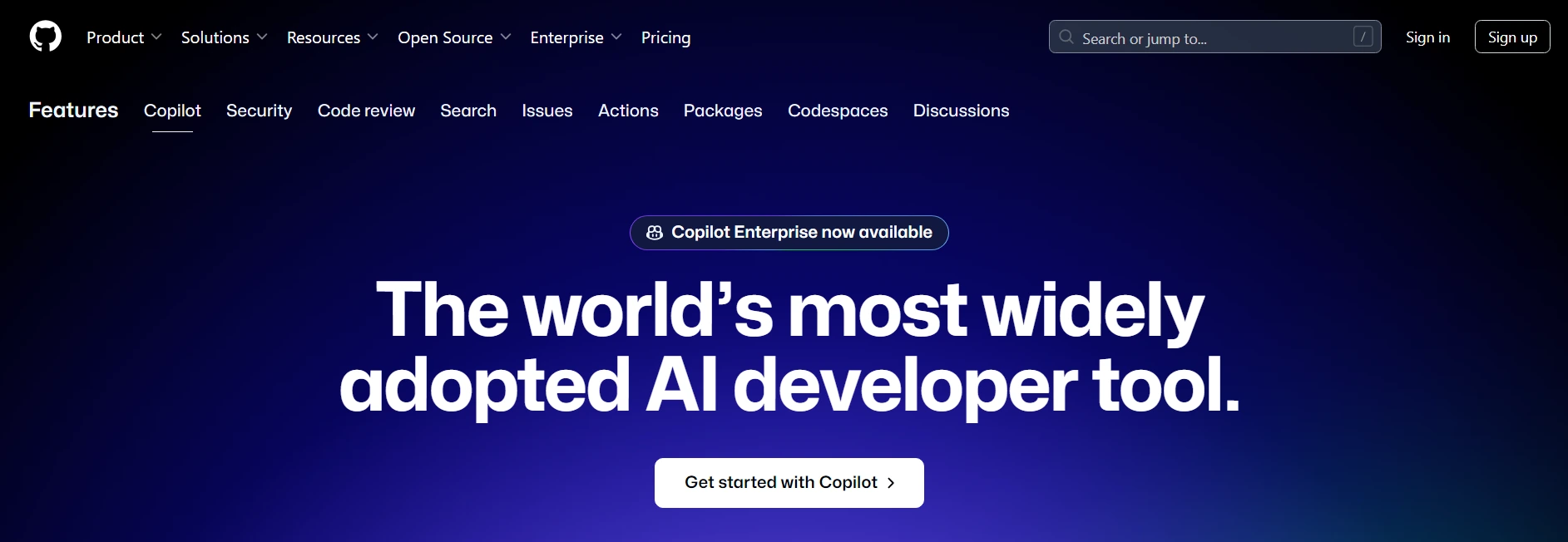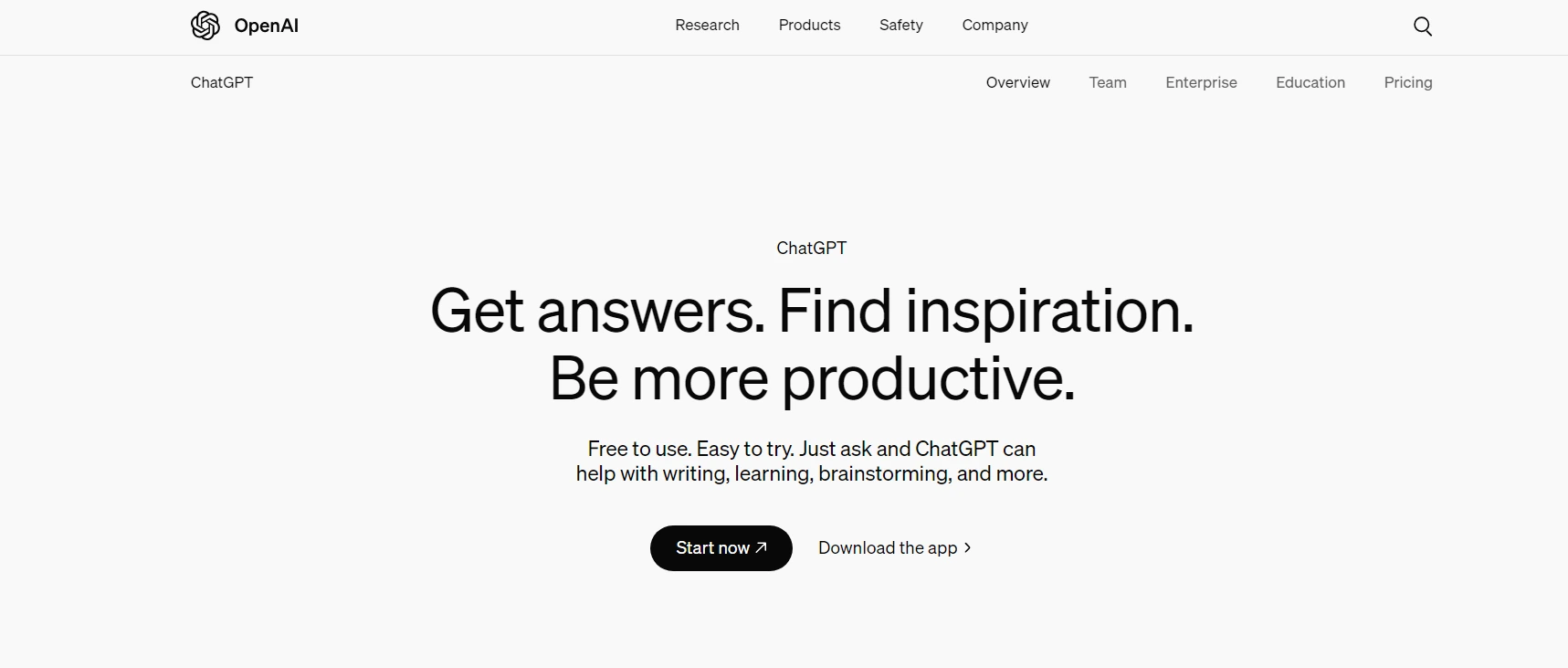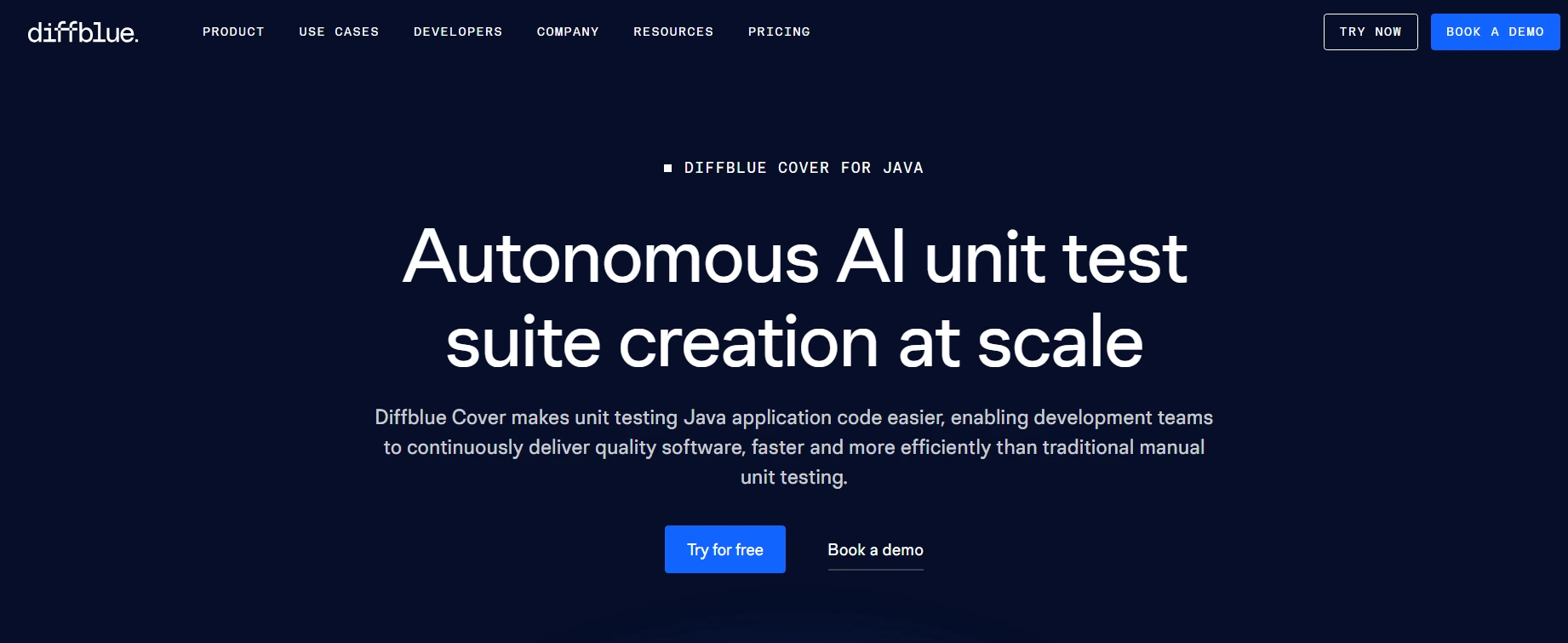- Home
- -Blog
Transforming Software Development with Generative AI.

- Updated on 01 Oct 2025
- Shabir Ahmad
Generative AI refers to artificial intelligence that can create content-such as text, images, and even code-on its own based on patterns it has learned. In software development, generative AI tools are becoming powerful allies for developers, automating tasks like code generation, debugging, and testing.
This transformation is already making a noticeable impact. According to a report from PwC, generative AI has the potential to boost developer productivity by 20-50%, enabling teams to release software faster and with fewer errors. GitHub Copilot, an AI-powered coding tool, is now used by more than 1.5 million developers and it has been shown to reduce coding time by an average of 55% on simple tasks.
For developers, this means less time spent on repetitive
tasks and more time to focus on solving complex problems.
Teams can collaborate more effectively, with AI handling
the grunt work while businesses see faster product
development cycles and reduced costs.
By
integrating generative AI services
into software development, companies are positioning
themselves to build better products more efficiently,
which ultimately leads to a competitive advantage in the
market.
Automating Repetitive Coding Tasks
Generative AI development is transforming the way developers approach repetitive coding tasks. Traditionally, developers spend a significant amount of time writing boilerplate code, debugging, and handling repetitive elements of software projects. With the rise of AI tools, much of this low-level work is now automated, freeing developers to focus on more complex and creative tasks.

Tools like GitHub Copilot and ChatGPT have proven to be game-changers. GitHub Copilot, for instance, assists developers by suggesting code snippets in real-time, generating functions, and even completing entire blocks of code based on simple prompts. Additionally, with advancements in function calling in OpenAI, developers can now invoke external APIs and integrate various tools directly into their AI-driven workflows, making automation even more powerful. This allows developers to code faster, reducing the time spent on routine tasks by a significant margin. OpenAI's Codex, the engine behind Copilot, has been shown to help developers complete coding tasks 2.6 times faster compared to manual coding.

ChatGPT, on the other hand, is useful in generating code logic, answering technical questions, and even helping debug errors by providing quick solutions or alternative approaches, making it one of the most popular AI code assistants for developers. These AI tools drastically reduce the time developers spend troubleshooting or dealing with repetitive patterns in code.
Human-AI Collaboration in Software Development
Generative AI is not here to replace developers but to assist and enhance their capabilities. While AI can handle repetitive tasks, developers remain essential in guiding the creative and decision-making processes of software development. The key lies in effective collaboration between humans and AI (artificial intelligence) to improve productivity, creativity, and problem-solving.
AI tools like GitHub Copilot and ChatGPT work best when used alongside developers, providing suggestions and handling routine tasks while leaving critical decisions and complex problem-solving to human expertise. For instance, Copilot can suggest lines of code or entire functions, but it still relies on the developer to validate and integrate these suggestions into the broader project. This allows developers to focus more on innovation and complex coding challenges.
Collaboration between developers and AI has proven successful in several industries. For instance, Intuit leverages AI-driven development to automate parts of their financial software, speeding up development cycles and allowing engineers to focus on new features. Another example is Tabnine , an AI-powered coding assistant that helps teams collaborate more efficiently by providing intelligent code suggestions tailored to a team's specific coding style, significantly reducing coding time.
Improving Software Testing and Bug Detection
AI-driven tools are transforming the way software testing services are conducted by identifying bugs earlier in the development process, automating the generation of test cases, and improving the overall quality of the code.
Traditionally, manual testing and bug detection are
time-consuming and often prone to human error. Generative
AI is changing that by providing faster, more efficient
ways to catch issues before they become critical.
AI tools such as
Diffblue Cover and Testim use machine
learning to automatically generate test cases based on the
codebase, helping ensure that all parts of the software
are tested thoroughly, reducing the likelihood of bugs
slipping through the cracks.

These AI-powered platforms can also predict and identify potential vulnerabilities, helping developers fix issues before they cause significant problems during deployment. These AI-powered platforms can also predict and identify potential vulnerabilities, helping developers fix issues before they cause significant problems during deployment.
For example, AI-powered testing platforms like Applitools leverage visual AI to detect inconsistencies in user interfaces across different devices and browsers, ensuring that applications behave as expected.
Tools like DeepCode use AI to analyze code and spot security vulnerabilities, suggesting patches for potential issues.
The effectiveness of these AI tools lies in their ability to run tests continuously, providing immediate feedback and ensuring more stable software releases. This not only improves the quality of the software but also shortens development cycles, enabling teams to release updates and features faster while maintaining high standards for reliability and security.
Human-AI Collaboration in Software Development
Generative AI tools, like GitHub Copilot and Tabnine, act as coding assistants by suggesting snippets of code, flagging potential errors, and speeding up routine coding tasks. This collaboration allows developers to focus on higher-level tasks such as system design, feature innovation, and performance optimization. By handling repetitive coding and debugging, AI frees up time for developers to tackle more challenging problems, making the entire development process more efficient. Utilizing AI software development frees up time for developers to tackle more challenging problems, making the entire development process more efficient.
In terms of creativity, AI can offer alternative solutions to coding challenges, suggesting different approaches that a developer might not have initially considered. This collaborative problem-solving between human developers and AI enables better solutions to emerge, especially when it comes to optimization or working through complex algorithms. When combined with a product roadmap tool, development teams can better align these AI-driven innovations with project goals, ensuring better outcomes.
Several industries have successfully embraced this collaboration. Microsoft, for example, uses AI-powered tools to assist their development teams in creating and maintaining code more efficiently. Their integration of AI into development workflows has sped up bug fixing and testing while allowing human engineers to focus on creating innovative features.
Similarly, Shopify uses AI to assist developers with coding, debugging, and maintaining their e-commerce platforms, enabling faster feature rollouts without compromising on code quality.
Beyond Coding - AI in Software Architecture Design
Generative AI is not limited to writing code; it is increasingly becoming a valuable tool in software architecture design. AI can assist in creating optimized design patterns and system structures that are tailored to a project's specific needs, ensuring efficiency and scalability from the very start.
AI tools can analyze vast amounts of data, including previous project designs, industry best practices, and performance benchmarks, to recommend the most suitable architectural frameworks. This helps architects make informed decisions early in the design process, reducing the risk of future bottlenecks and minimizing the need for rework.
For example, AI can evaluate whether a microservices architecture or monolithic structure would be better suited for a particular application based on expected traffic, security requirements, and scalability needs. It can also suggest cloud-native approaches or hybrid solutions that align with the organization's goals, helping teams make architecture choices that are aligned with long-term strategies.
AI-driven platforms like Grammatech's CodeSonar and ArchiMate analyze existing software systems to identify inefficiencies and suggest improvements in system architecture.

By reviewing data flows, system interactions, and performance metrics, AI can recommend better design patterns or modularization approaches that improve system maintainability and reduce technical debt.
This AI-driven approach to software architecture design not only ensures that the system will perform optimally from day one but also helps future-proof the application, making it easier to scale and adapt as needs evolve. As AI continues to improve, its ability to assist in the architectural phase will become even more critical for developing complex, high-performance systems efficiently.
Addressing Ethical Concerns in AI-Driven Development
As generative AI becomes more integrated into software development, ethical concerns surrounding its use must be carefully considered. While AI can boost productivity and innovation, it also brings potential risks related to bias, privacy, and responsible use.
One major concern is the risk of bias in AI-generated code. AI models, like those used in code generation, are trained on large datasets that may contain biases. If an AI tool learns from biased or flawed data, it could produce code that perpetuates these biases, leading to unintended consequences such as discriminatory algorithms.
For example, an AI model trained on biased datasets might generate code that impacts the fairness of algorithms used in hiring or financial decision-making systems. Developers must be vigilant in reviewing AI-generated outputs to ensure they align with ethical standards.
Privacy issues are another key concern, especially when AI tools process sensitive user data or personal information. Developers using AI in their applications must ensure that the AI systems comply with data protection regulations and do not unintentionally expose or misuse sensitive data. It's essential to evaluate how AI tools handle data and to implement safeguards, such as data anonymization and encryption, to protect user privacy.
To mitigate these ethical risks while still benefiting from AI tools, developers and organizations can adopt responsible AI practices. This includes implementing the following strategies:
- Bias Audits: Regularly audit AI models and their outputs for biases, especially when handling sensitive domains like healthcare, finance, or legal matters. Identifying and correcting biased behaviors in the AI early on can prevent ethical violations.
- Human Oversight: Ensure that AI-generated code and recommendations are thoroughly reviewed by human developers before deployment. This human oversight acts as a safeguard against unintended consequences.
- Transparency and Accountability: Maintain transparency in how AI models are trained and how they make decisions. Ensure accountability by providing clear documentation of the AI's design, data sources, and decision-making processes.
- Data Privacy Measures: Implement strong data governance practices, including compliance with privacy regulations like GDPR and CCPA, to safeguard user data and avoid potential privacy violations.
For those looking to specialize in this area, pursuing a PGDM in AI offers a deep understanding of AI technologies and their practical applications. Additionally, an MIT AI certificate can further enhance one's knowledge, providing access to advanced techniques and insights from one of the leading institutions in the field
Improving Software Security with Generative AI
Generative AI is playing a crucial role in enhancing software security by automating the detection of security vulnerabilities, conducting penetration tests, and ensuring that code remains secure throughout the development process.
Traditionally, manual security reviews and testing can be time-consuming, prone to human error, and may not catch all vulnerabilities. AI-driven tools are changing this by offering faster and more comprehensive security solutions.
One key way AI improves security is through automated vulnerability detection. Tools like Snyk and DeepCode scan codebases in real-time to identify potential security flaws, such as buffer overflows, SQL injection risks, or cross-site scripting (XSS) vulnerabilities.
These AI tools continuously monitor code as it's written, flagging potential security issues before the software is deployed. This proactive approach significantly reduces the likelihood of vulnerabilities making it into production, where they could be exploited by malicious actors.
Generative AI is also used to automate penetration testing. Penetration tests, or "pen tests," simulate real-world attacks on a system to identify security weaknesses. AI can perform these tests faster and more frequently than human testers.
Tools like Pentera use AI to simulate various attack vectors, uncovering weaknesses in infrastructure, APIs, and application layers that human testers might miss. By automating these tests, companies can conduct thorough security reviews on a continuous basis, ensuring that any vulnerabilities are detected and mitigated before an actual attack occurs.

Another area where AI is making an impact is in the security review process. AI tools can analyze large codebases and security logs more quickly than human teams, identifying patterns that might indicate a vulnerability or ongoing attack. AI can also cross-reference code changes with known vulnerabilities in open-source libraries or frameworks, helping developers avoid introducing risky dependencies into their projects.
For example, Microsoft uses AI in its Security Development Lifecycle (SDL) to help identify vulnerabilities early in the development process and ensure that security best practices are followed throughout the code review phase. AI's ability to quickly analyze and learn from security data ensures that potential risks are flagged and addressed faster than traditional methods. AI code review systems integrate seamlessly into development workflows, providing continuous feedback on potential vulnerabilities.
Generative AI's role in improving software security is essential for modern development environments where speed and security are both critical. By automating many aspects of security testing and review, AI helps teams deliver secure, reliable software without sacrificing development velocity.
The Future of Generative AI in Software Development
As generative AI continues to advance, its role in software development is poised to become even more integral, with emerging trends reshaping how software is designed, built, and maintained. The next wave of generative AI innovations will likely go beyond simple code generation, influencing entire development workflows from system architecture to ongoing maintenance.
One of the most exciting trends is the rise of AI-generated software architectures . In the future, AI tools will not only assist in writing code but also help design comprehensive system architectures tailored to specific project requirements. These AI systems could analyze project needs, traffic patterns, and performance data to propose optimal architectures from the outset, improving scalability and maintainability without human intervention. This could drastically shorten the time it takes to move from idea to implementation.
Automated documentation is another area where generative AI is making strides. Documentation has long been a pain point in development, often being incomplete or outdated. AI-driven tools are now able to automatically generate and update documentation based on the latest code changes, ensuring that developers have access to accurate, up-to-date information. This automation will help reduce the overhead for development teams and improve knowledge sharing across projects.
AI is also pushing the boundaries of innovation in software development, enabling developers to experiment with new features, optimize existing workflows, and implement complex algorithms with ease. AI can suggest creative solutions to programming challenges, optimize resource management, and even help design user interfaces by predicting how users will interact with different components.
Looking ahead, AI-driven development environments may become the norm. These environments could be fully integrated with AI assistants capable of managing every aspect of the development cycle—automating testing, debugging, security checks, and even deployment. This would allow developers to focus more on strategic decisions and creative problem-solving while AI takes care of routine tasks and optimizations.
Generative AI's potential to disrupt traditional development methodologies is substantial. With AI automating many tasks that once required manual effort, development cycles will become significantly shorter. Agile and DevOps practices, which rely on rapid iteration and continuous delivery, may be further streamlined with AI. We could see a shift toward "AI-first" development models, where AI tools are embedded in every phase of the development lifecycle.
In the longer term, AI could evolve into a co-developer-a fully integrated partner in the development process that not only assists but actively shapes the direction of software projects. This partnership between human developers and AI could result in more efficient, innovative, and scalable software solutions, fundamentally transforming the way software is built and maintained.
As these trends continue to evolve, generative AI's influence on the software industry will only grow, pushing the boundaries of what's possible and enabling developers to build more sophisticated, reliable, and user-friendly software faster than ever before.
Conclusion
Generative AI is transforming the landscape of software development by automating repetitive tasks, improving security, enhancing collaboration, and even influencing how software architectures are designed. This powerful tool is not replacing developers but working alongside them, allowing human creativity and problem-solving to thrive while AI handles the routine and time-consuming aspects of coding, testing, and maintenance.
Looking ahead, generative AI holds the potential to disrupt traditional development methodologies and create new opportunities for innovation. Developers who embrace AI tools will find themselves better equipped to handle the growing complexity and speed required in modern software development, ensuring that they remain competitive in an increasingly AI-powered world. Ultimately, generative AI is not just a tool for efficiency-it is a catalyst for a new era of smarter, faster, and more scalable software development.



